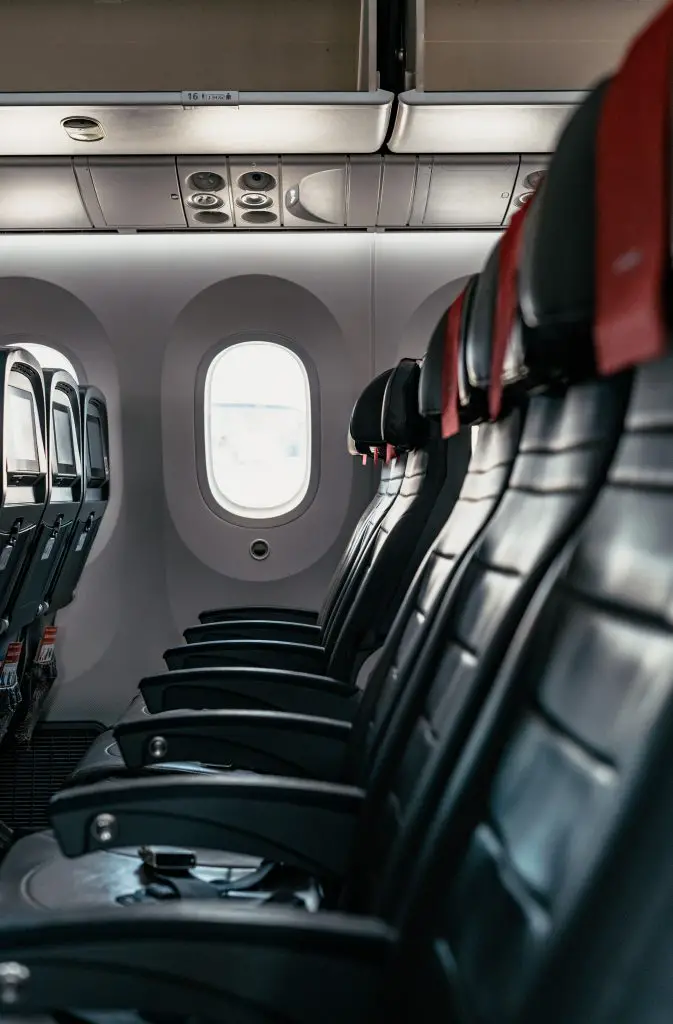As we are all facing an unprecedented crisis we decided to share some thoughts about the severity of the COVID-19 pandemic impacting the Airlines. This article results in the analysis of several publications from various sources which will be listed bellow.
Table of Contents
What is the COVID-19 ?
According to the World Health Organisation, the newly discovered Coronavirus is a fast spreading virus that can cause serious respiratory illness. The Institut Pasteur reports that 30% to 60% of infected subjects are asymptomatic or paucisymptomatic which cause little or no clinical manifestations of the virus. For all the patients that arrive at the hospital on COVID-19 symptoms, 20% remain in the hospital while 5% require admission to intensive care.

The COVID-19 problematic
What makes this virus particularly dangerous is that most of the infected patients won’t have any / few clinical manifestations of the virus while being contagious. This result in an epidemic that spreads at an alarming speed in our worldwide connected countries thanks to modern transportation. While only a small percentage of the infected patients would need their admission into intensive care, the quickening rate of infection and the length of the stays in intensive care is what really threaten the healthcare system. Every country have a specific intensive care capacity determined by the number of ventilators, beds, the availability of the hospital staff and medical supplies.
COVID-19: Why the lockdown and social distancing
This pandemic has caught the world by surprise and most of the countries weren’t ready to face it. The lockdown procedure is an emergency action that has been taken in order to contain the pandemic by reducing the daily exposition of infected patients. By staying home and keeping your distance, you limit your social interaction and the number of person that you infect. The lockdown has an immense impact on the economy but is a necessary procedure to help the healthcare system facing the epidemic.

COVID-19: What potential resolution
While it is very hard to predict when this crisis will end, we can focus on what would be the events that will end the proliferation of the virus.
- A vaccin: several organisations are currently working on a vaccin for the COVID-19. It is unclear as of when this vaccin would be available but Bill Gates is expecting to have a solution for Q2 or Q3 2021.
- Herd immunity: is obtained when 60-70% of the population get immunity to the virus. Two paths are possible toward herd immunity. The first one is with a vaccin that will develop the immunity without exposing the patient to the risk of death. The second way is by natural exposition of the population to the virus. This second option highly criticized as it represents a risk for the population. While some specialists predict that we won’t develop herd immunity for years due to social distancing, others are more optimistic. Indeed as a significant portion of the population infected doesn’t have any symptoms and because we are currently lacking of COVID-19 tests, another prediction is that an higher percentage of the population is currently immune to the COVID-19. If true, this prediction would bring us months to a resolution to this crisis.
- Treatments: There are numerous scientists working on different treatment that might be promising to fight against the COVID-19 pandemic. Some of them have already shown some interesting early results such as the hydroxychloroquine & azithromycin , the Tucilizumab (a monoclonal antibody), Remdesivir and other are promising but still in experimental phase. Treatments to COVID-19 infected patients are months away and will help to reduce the patients death rate and the length of stay in hospitals.
- Higher capacity of the healthcare system: As described above, the current shortage / limitation of important medical equipments, supplies and staff wouldn’t allow us to face this pandemic without emergency procedures such as the lockdown / social distancing. Every days more ventilators, protection equipments and other medical supplies are being produced which is slowly helping us to increase the capacity of our healthcare system.
Time is plying in our favor during this unprecedented crisis and we could expect a resolution months away in an optimistic scenario of a faster herd immunity or in 2021/2022 for a pessimistic scenario where we would need to wait for a vaccin. Several countries announced planning on carefully leaving the confinement phase beginning of May while maintaining some activity restriction. Analyzing the first 2 weeks of statistical data gathered in this new phase will help to understand the current trend and if positive to continue moving the end of this crisis. It is highly expected that governments are going to try to follow a thin line taking actions that protect the economy while making sure that the number of COVID-19 infected patients doesn’t exceed the capacity of the healthcare system.
COVID-19: What impact on the airlines business?
The number of commercial flights have dropped between 60 to 90% depending the continent. Most airlines are suspending their flights, borders are remaining closed and planes are grounded which is costing millions daily. Flybe, Virgin Australia, Virgin Atlantic, Norwegian,.. airlines are dangerously threatened by this crisis. Without operation revenue airlines’ cash reserves are deceasing at an alarming rate. Many of them secured or are about to secure loans from government or the private sector in order to allow them to resist those difficult times. Some of them are accelerating the retirement plan for their old aircrafts and canceling orders of new aircrafts from OEM.

COVID-19 have and will have a major impact on the airline industry. Some of the causes are directly related to the virus proliferation and some others are indirectly related.
- Health safety concerns: The COVID-19 unfortunately managed to create fear among all of us. We don’t feel safe anymore and life appears to be more precious to us. This fear will play an important role helping population to keep wearing protective equipments and allowing to maintain social distancing. It is highly probable that this feeling remains after this pandemic and all none essential products & services will have to particularly convince the customer on that point. Airlines will have to be innovative to convince their customers to fly again by demonstrating that health safety is as important as flight safety. Some airline such as Delta already started leading the way with their “delta clean” service.
- Digitalization: With the proliferation of the COVID-19 virus we observe a significant growth of Visio-conference systems and other tools that allow businesses to maintain a certain level of activity while allowing their employees working from home. It is certain that worldwide businesses will definitely rely more on theses technologies in the future. The COVID-19 crisis has been the event that triggered that transition pushing companies to modify their processes and adapt to the situation. There are several advantages that have been reported with this new working organization. Less traveling time has allowed professionals to gain a lot of productive time. An improvement in the work/life balance has been witnessed in several companies that weren’t used to the home office. Nevertheless, we can’t have an entire digital society as a lot of companies don’t have a type of activity fully or partially compatible. You can’t build an aircraft’s engine from home and some face to face meetings will still be needed. A recent Stanford studies highlights few important points to take into consideration while encouraging home office in businesses. Good productivity rates can only be achieved if professionals are working home alone without having to take care of any other family member. Professionals in visio-conference meetings are not as innovative as in face to face meetings. Lastly a long exposition of professionals to home office can create loneliness, isolation and depression feelings. Home office practices will definitely play a more important role in our daily professional life but we will certainly combine those new practices with old ones in order to allow us to maintain essential social interactions.
COVID-19: What resolution for airline industry
It is pretty hard to forecast specific dates or time for the resolution of this crisis but we can imagine it to be in three different steps.
The Quarantine phase:
The quarantine has been introduced pretty early as an emergency action set up by governments to fight against COVID-19 in order to protect the population. This phase as a dramatic impact on the airline industry as only essentials, repatriations and cargo flights are allowed worldwide. As previously indicated, the number of worldwide flights decreased by 60 to 90% depending of the region. This phase will really hurt airlines cash reserves and push them to enter into a surviving mode.
It is unclear how long this phase will last as it will depend on the spread of the virus and the evolution of the number of cases. While several countries entered or are entering the next pre recover phase, it is possible that we will have to backtrack if a second wave surges.

The Pre-Recovery phase:
This phase allows the population to gradually leave the confinement toward a more “normal” way of living. Only none essential businesses remain closed and will be opening step by step.
Domestic flights can expect to start first as most of the borders will remain closed at the beginning of the phase. Argentina has announced to ban flight tickets sales until September 1st. Social distancing could be mandatory for every flight during that phase as wearing protective equipment at the airport and during a flight. Borders will gradually open during that phase but only the “braves” will fly. Airline will have to really convince their customers on their health safety concerns.
This phase could probably last up to the end of 2021 depending how fast we get a 70% herd immunity.

The Recovery phase:
The recovery phase will only start with the COVID-19 pandemic behind us. Some analysts predict that we will get back to pre-crisis level around 2024 but it really depends on the following points:
- The impact of the digitalization on business travels: Would we continue to travel for face to face business meeting? Probably for some of the most important ones but how often and what would be the impact for the airline industry.
- Aircraft cleaning and disinfection: It is absolutely certain that Airlines will have to convince on this topic and be really innovative on ways to limit the spread of virus and germs during a flight.
- Social distancing: Would we maintain social distancing in aircrafts? Maintaining social distancing could have an extremely important impact on the airline business and could reshape the entire aerospace industry. By significantly reducing the number of seats in an aircraft and maintaining that measure as a new standard, we could see the end of economic flight travels. This measure won’t be probably maintained as it would drastically reduce the total market size putting many low cost carrier out of business. Nevertheless, business class travel could emerge as a preferred standard for every small business and corporate flights.
- The recovery of the touristic international travels: How will we travel internationally in the future? The willingness to limit the emission of CO2 combined with the fear to get sick in a foreign country will have an impact on international touristic travels. Airlines would have to address those two points if willing to recover what flights volume it used to be.
- Impact of new technologies: New Air Taxi, Autonomous vehicles, hybrid and electric aircrafts will impact the global transportation market. It will redefine the way we move around. Regional airlines could be the first ones to be really impacted in the years to come and this crisis could accelerate the trend.





